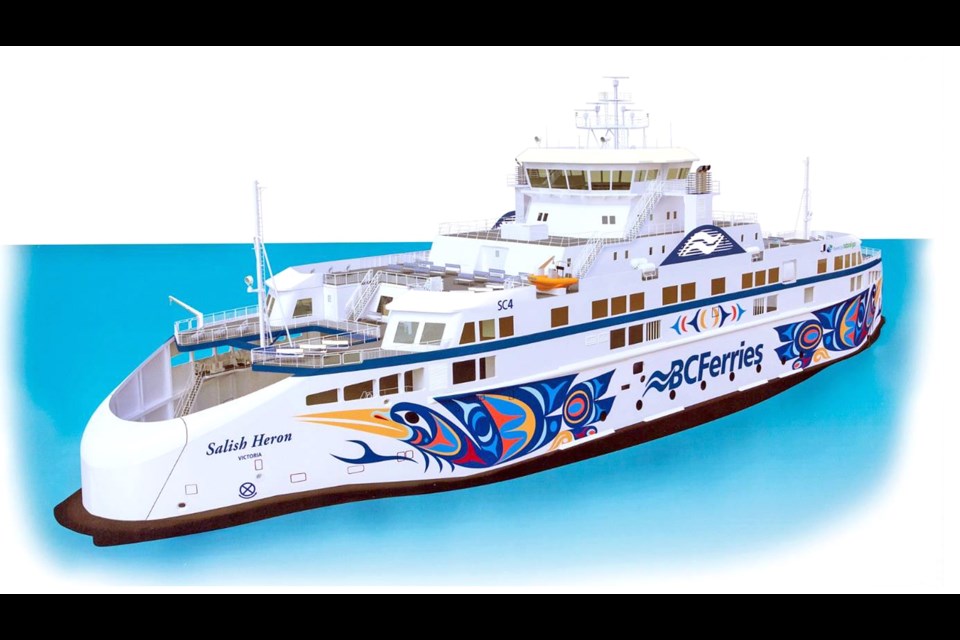A colourful new Salish-class ferry is bound to be an attention-grabber when it begins sailing through local waters sporting images of herons with bright-yellow beaks.
The design for the Salish Heron, scheduled to begin service next spring between Swartz Bay, Pender, Saturna, Mayne and Galiano, was created by artist Maynard Johnny Jr. of Penelakut First Nation and unveiled on Monday.
In a statement, Johnny said herons were once plentiful in the area now known as Chemainus, and showed people where fish were in abundance.
The traditional Salish design with contemporary colours reflects the long beak and long neck of a Great Blue Heron, and its wing and tail feathers. “I wanted to create a Salish Heron that was fascinating to the viewer and was obvious to the eye yet kept a flow of design and colour.”
Johnny’s work will be displayed on the exterior and interior of the ship.
The First Peoples’ Cultural Council invited Coast Salish artists to submit expressions of interest for designs for the new vessel. From 36 submissions, a committee of Indigenous artists and B.C. Ferries officials selected a shortlist who were commissioned to develop design concepts. Johnny’s design was selected.
“Maynard Johnny has created incredible designs paying tribute to the Coast Salish People and the territory where we operate,” said B.C. Ferries’ president Mark Collins.
Powered mainly by liquefied natural gas, the Salish Heron will join three other Salish-class vessels, the Salish Raven, Salish Eagle and Salish Orca, built in Poland in 2016, when it begins service in the spring. The first three cost about $200 million to build. The Heron came in at about $92 million.
The ferries are designed to operate more efficiently than older ferries and to be environmentally friendlier.
All four were built by Remontowa Shipbuilding S.A. in Gdansk, Poland. They are 351 feet long and have the capacity to carry up to 138 vehicles and 600 passengers and crew.
The smaller 278-foot-long, diesel-fuelled Mayne Queen, built in 1965, will be retired. It can carry up to 58 vehicles and has capacity for up to 400 passengers and crew members.



